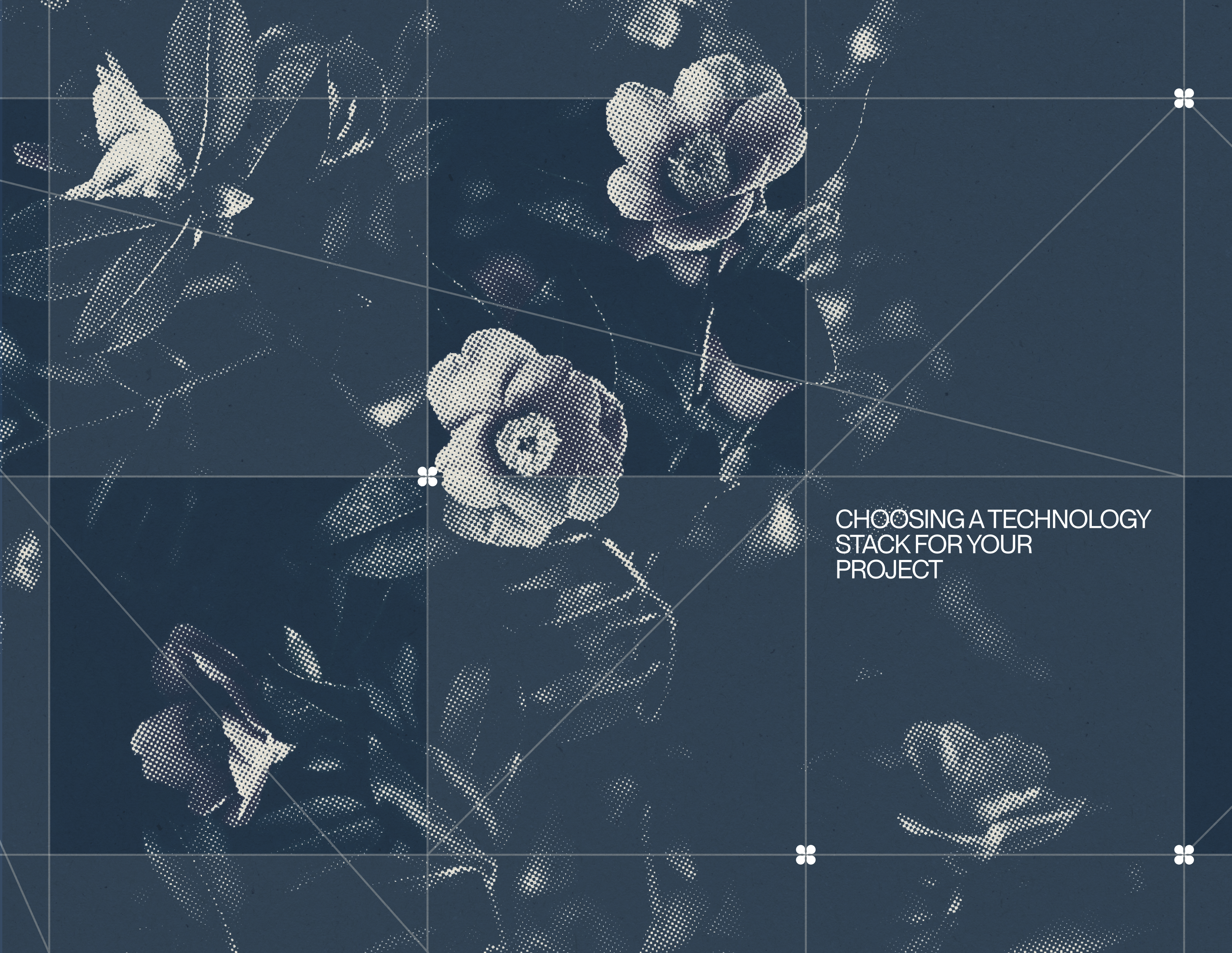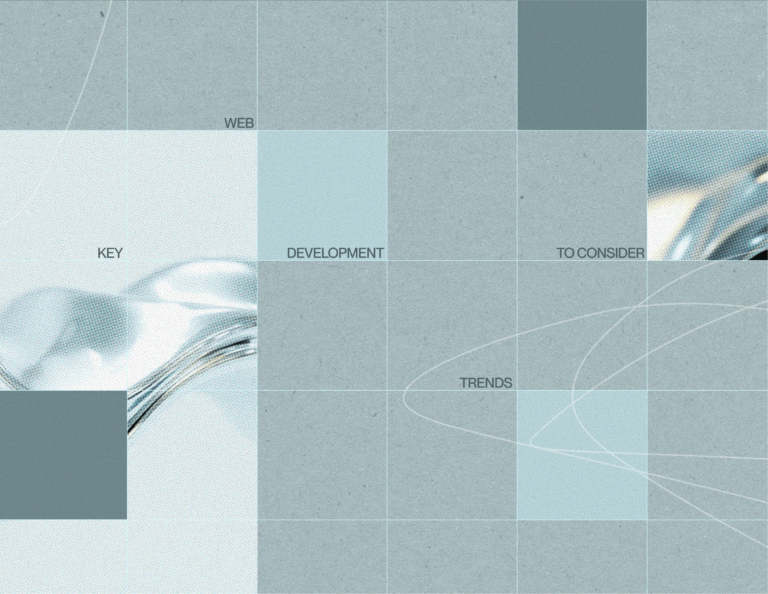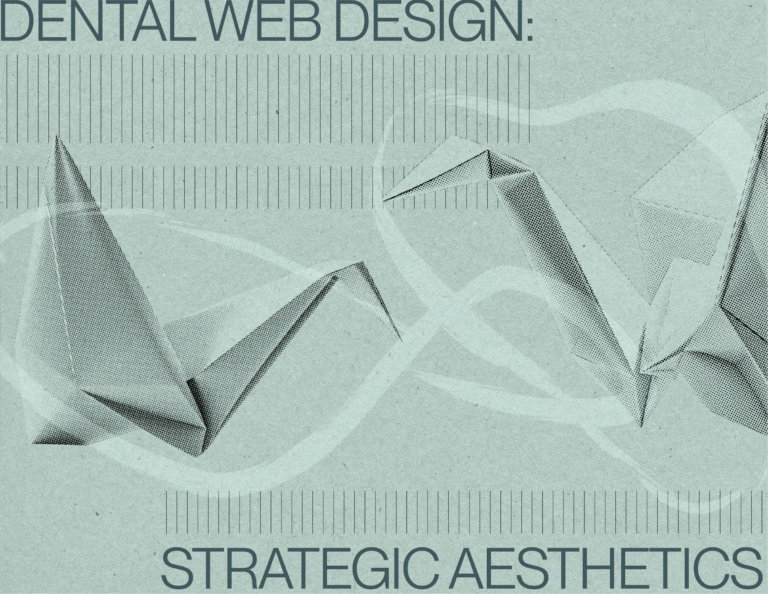Outline:
Selecting the right technology stack is one of the most critical decisions you’ll make for your project. The technology stack you choose will influence the development process and the performance, scalability, and future maintenance of your application. With a multitude of options available, from traditional stacks like LAMP to modern serverless solutions, it’s easy to feel overwhelmed. This article will guide you through the process, helping you understand what a technology stack is, why it’s so important, and how to choose the best tech stack for web development or any other project.
The Crucial Impact of Your Technology Stack Decision
Your technology stack is the backbone of your project. It encompasses all the tools, frameworks, and technologies used to build and run your application. Choosing a technology stack isn’t just a technical decision. It’s a strategic one. A well-chosen stack can accelerate development, reduce costs, and provide the foundation for a scalable, high-performing application. Conversely, the wrong choice can lead to technical debt, poor performance, and high maintenance costs, ultimately jeopardizing the success of your project.
The right technology stack is particularly crucial for startups and small businesses. With limited resources and tight deadlines, these organizations need to ensure that their tech stack aligns with their business goals and can grow as the company scales. For larger enterprises, the choice of a technology stack impacts not only the development team but also the overall IT infrastructure, security, and compliance requirements.
Essential Criteria for Selecting Your Ideal Tech Stack
When deciding on the best technology stack for your project, several factors need to be considered. These factors will help you align your technical decisions with your project’s objectives, ensuring that the technology stack you choose will support your long-term goals.
Pinpointing Critical Project Specifications
Every project is unique, with its own set of requirements. Whether you’re building a real-time chat application, an e-commerce platform, or a content management system, the specific needs of your project will heavily influence your choice of technology stack. Consider the type of application, expected user base, required features, and performance benchmarks. For example, a high-traffic web application may require a stack that supports load balancing and scalability, such as the MEAN or MERN stack.
Scaling Up
Scalability is a key factor, especially for projects expected to grow rapidly. The technology stack you choose should be capable of handling increased user loads and data volumes without compromising performance. Stacks like Django for Python or Node.js for JavaScript are known for their scalability and can be excellent choices for applications that need to handle large numbers of simultaneous users.
Maximizing Success Through Team Expertise
The skills and experience of your development team play a crucial role in selecting a technology stack. It’s essential to choose technologies that your team is familiar with or can learn quickly. Adopting a stack that requires significant upskilling or hiring new talent can delay your project and increase costs. However, if a particular stack offers significant long-term benefits, investing in training your team may be worthwhile.
Relying on Community Support
A robust community and extensive documentation are invaluable when working with any technology stack. Popular technology stacks like Ruby on Rails or Laravel have large communities that provide ongoing support, plugins, and libraries that can speed up development. In contrast, newer or less popular stacks may lack these resources, making troubleshooting and problem-solving more challenging.
Balancing Costs: Finding an Affordable Tech Stack
Budget constraints often dictate the choice of technology stack. Some technologies come with licensing fees, while others are open-source and free to use. Additionally, consider the cost of development, hosting, and future maintenance. For example, the LAMP stack (Linux, Apache, MySQL, PHP) is cost-effective and widely used, making it a good choice for projects with tight budgets.
Building a Secure Foundation
Security is paramount, especially for applications that handle sensitive data. Different technology stacks offer varying levels of security features, so it’s crucial to choose one that meets your project’s security requirements. Ensure that the stack you select adheres to best practices in security, such as encryption, secure authentication, and regular updates to patch vulnerabilities.
Reducing Time to Market
If your project needs to be launched quickly, the time to market is a significant consideration. Certain technology stacks, like Ruby on Rails or the MEAN stack, are known for enabling rapid development due to their simplicity and extensive libraries. A faster time to market can provide a competitive edge, especially in industries where being first is crucial.
Best-in-Class Technology Stacks for Diverse Projects
Choosing the best tech stack for web development or any other type of project often depends on the specific needs of the application. Here are some popular technology stacks, each suited for different types of projects.
MEAN/MERN Stack
- Best For: Full-stack JavaScript development, single-page applications, and real-time applications.
- Why: This stack is highly flexible, allowing developers to use a single programming language across the entire application. It’s particularly well-suited for building dynamic, real-time applications like chat apps or collaborative tools.
LAMP Stack
- Best For: Traditional web applications, CMS, and e-commerce platforms.
- Why: The LAMP stack is one of the oldest and most reliable technology stacks, known for its stability, security, and cost-effectiveness. It’s a popular choice for building websites using platforms like WordPress, Joomla, or Drupal.
Ruby on Rails
- Best For: Rapid development of web applications, particularly for startups.
- Why: Ruby on Rails is known for its simplicity and productivity, making it ideal for startups that need to get their product to market quickly. The framework encourages convention over configuration, which speeds up development.
Django
- Best For: Scalable web applications, data-driven applications, and projects requiring a high level of security.
- Why: Django is a high-level Python framework that promotes clean and pragmatic design. It’s highly scalable, making it a good choice for projects that expect significant growth.
.NET Stack
- Best For: Enterprise-level applications, Windows-based applications, and high-security projects.
- Why: The .NET stack offers a wide range of tools and libraries for building robust and scalable enterprise applications. It’s particularly strong in environments where integration with other Microsoft products and services is required.
Serverless Stack
- Best For: Scalable, event-driven applications with minimal infrastructure management.
- Why: Serverless computing allows developers to build and run applications without managing servers, which can reduce costs and complexity. It’s ideal for applications that require auto-scaling based on demand.
Strategic Approaches to Deciding on Your Tech Stack
Evaluating and choosing a technology stack involves balancing several factors, including project requirements, team expertise, and long-term maintenance considerations.
01 Define Your Project Requirements
Start by clearly defining what your project needs to accomplish. Consider the type of application, its functionality, user base, and performance expectations. Create a list of must-have features and desired outcomes.
02 Assess Your Team’s Skills
Take stock of your development team’s skills and expertise. If your team is well-versed in a particular technology, it may make sense to use that technology to minimize the learning curve and speed up development.
03 Research Popular Technology Stacks
Explore different technology stacks that are commonly used for similar projects. Look at case studies, industry trends, and developer communities to understand the strengths and weaknesses of each stack.
04 Consider Long-Term Maintenance
Think about the long-term implications of your choice. Will the stack be easy to maintain and scale as your project grows? Does it have strong community support and regular updates?
05 Evaluate Security and Compliance Needs
Ensure that the technology stack you choose meets your project’s security requirements. This is particularly important for applications that handle sensitive data or must comply with regulations like GDPR or HIPAA.
06 Estimate Costs and Budget
Consider the total cost of ownership, including development, hosting, and maintenance costs. Choose a stack that fits within your budget while still meeting your project’s needs.
07 Make an Informed Decision
After weighing all these factors, choose the technology stack that best aligns with your project’s goals and constraints. Remember that no stack is perfect, so prioritize the factors that matter most to your project.
What’s Next? The Future of Technology Stack Development
The world of technology is constantly evolving, and staying ahead of future trends is crucial for making informed decisions about your technology stack.
Serverless Architecture
Serverless computing is gaining popularity due to its cost-effectiveness and scalability. As more companies adopt this architecture, we’re likely to see an increase in serverless frameworks and tools.
Microservices
Microservices architecture allows developers to build applications as a collection of loosely coupled services, each responsible for a specific function. This trend is growing, especially in large-scale applications, as it allows for greater flexibility and scalability.
AI and Machine Learning Integration
As AI and machine learning continue to advance, we’re seeing more technology stacks integrate these capabilities. Python-based stacks, like Django, are particularly well-suited for AI-driven applications due to Python’s strong libraries for data science and machine learning.
Cross-Platform Development
With the rise of mobile and web applications, cross-platform development stacks are becoming more popular. Technologies like React Native and Flutter allow developers to build applications that run on multiple platforms with a single codebase.
Edge Computing
Edge computing is an emerging trend that involves processing data closer to the source rather than relying on centralized cloud servers. This trend could influence the choice of technology stacks for applications that require real-time data processing and low latency.
On a Final Note
The choice of a technology stack is a pivotal decision that directly influences the success of your project. By carefully evaluating factors such as project requirements, scalability, team expertise, and emerging trends, you can select a stack that aligns with your goals and sets your project up for success. Remember, the right stack not only supports your immediate needs but also ensures that your application remains adaptable and resilient in the face of future challenges.
Ultimately, while the technology stack is a critical component, the success of your project also depends on the strength of your development team, the clarity of your objectives, and your ability to adapt as the project evolves. With a well-chosen stack, your project will be well-equipped to deliver a high-quality product that meets user needs and grows alongside your business. If you need further guidance on selecting the right technology stack, feel free to contact us for expert advice and support.





